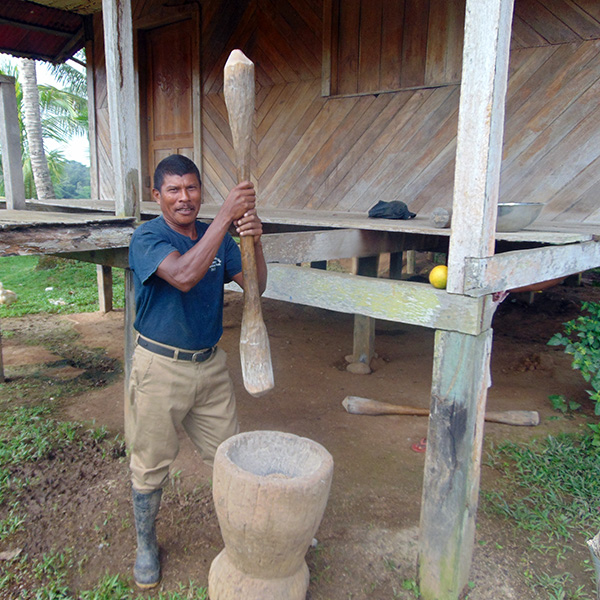Stories of Change

Joanes grinds rice outside his home.
Ending hunger together in Nicaragua
“The biggest obstacle to getting my rice to market is the distance,” Joanes Salgado says. It’s a two-hour walk from Joanes’ farm to the nearest road in this remote part of Nicaragua.
Joanes grows rice, beans and plantains, which are the three staple crops for the indigenous Miskito and Mayangna people in the area. Joanes, a 49-year-old father of six, has been participating in a program to help improve his yields for four years now. This CWS-supported program is operated by a respected local organization called Accion Medica Cristiana. Experts from AMC work with groups of farmers to set up test plots, where they grow the same crops side-by-side in different ways. They test traditional methods against modern ones and can decide for themselves which practices to adopt – all in a plot where the crops are growing in the local climate and soil.
Each participating farmer commits to sharing what they are learning with two other farmers, usually neighbors or extended family. They also share seeds. Joanes is among the farmers who participate in the program at the Wiwinak training center along the Rio Coco, which forms the border of Nicaragua and Honduras.
Over the years since he first joined the program, Joanes has been putting into practice what he has learned. He says that he has successfully managed to increase his yields of all three staple crops. This past planting season, he planted almost five acres of rice. He expects to make about $1,000 in profit from selling his harvest. Joanes also raises pigs, and the profits he makes from selling pigs enable him to pay laborers to help him plant his crops.
The long years of hard work are paying off. Today, Joanes has enough food to feed his family, which hasn’t always been the case. He is planning to use the profits from his rice sales to buy a couple of horses, to overcome that main challenge and make it easier to get his rice to market. And, in this area where neighbors do all they can to support each other, he sells some of his rice, beans, cassava, plantain and pork at low prices to his even more vulnerable neighbors.
We’ve seen it so many times in communities around the world: making sure everyone has enough to eat is not something accomplished in isolation. Real progress comes when neighbors rally and work together, and this is a great example of it. Farmers work together to test agricultural practices, and then they commit to spreading the word so that everyone can prosper. They help each other out during harvest season, when it’s a race against the clock to avoid humidity. And when one family prospers, they share what they can with their neighbors. It’s people like Joanes and communities like Wiwinak that remind us every day that ending hunger is possible when we work together.
